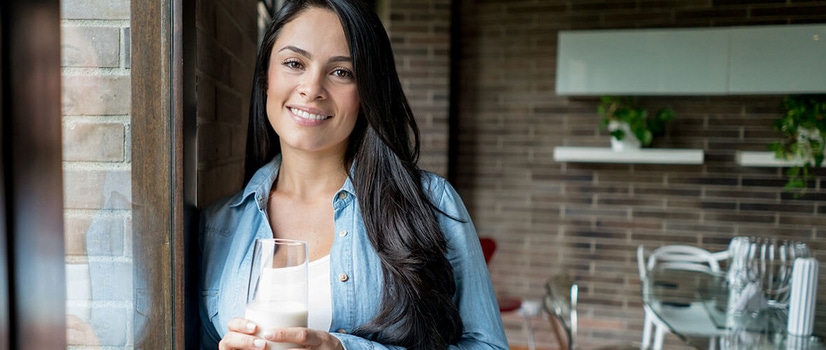Soy milk, tofu and tempeh could be important menu items for those with breast cancer. It’s well documented that the breast cancer risk is lower in Asian countries, where soy consumption is much higher. And while the science is still developing, the link is strengthening all the time between eating soy and surviving breast cancer in Asian and western countries alike.
What’s new?
A study published recently in the journal Cancer investigated the diets of more than 6,000 women with breast cancer in America and Canada. Over 9 years, the study showed that women who ate the most soy had a 21% lower risk of death than those who ate very little. Soy had no negative impact on women who were taking tamoxifen, a drug used to treat and prevent the recurrence of breast cancer.
However, even those women who reported consuming the most soy isoflavones ate very little (just over or equal to 1.5mg daily) in comparison to Asian people, who typically consume 30-50mg per day. So, it’s likely that more soy isoflavones will provide greater protection.
What about reducing my breast cancer risk?
A growing number of population studies are showing that soy has positive effects on breast cancer protection and survival.
A meta-analysis of three Chinese and two US prospective studies involving more than 11,000 women found that after breast cancer diagnosis, the women with the highest soy isoflavone intake had a 16% lower risk of death and were 26% less likely to have their breast cancer return.
Studies are also finding that when girls have 1-1½ servings of soy each day during childhood and adolescence, their risk of breast cancer later in life can be reduced by as much as 28% to a hugely significant 60%. This suggests that the best protection may be achieved by eating soy early in life and continuing from there.
Not only does soy have great cancer protective potential, many other studies show that it is a powerful antioxidant and anti-inflammatory, can improve blood sugar control, and can lower blood cholesterol.
How many soy isoflavones should I have each day?
For centuries, one third of the world’s population has regularly consumed soy. In Japan, the average isoflavone intake ranges from 30 to 50mg (up to 3 serves of soy) per day, while in the US and Europe, it’s less than 3mg.
Traditional foods such as soy milk and tofu can contain 10-30mg or more of isoflavones per serving. As many as 1-3 serves of soy per day (as part of a healthy balanced diet) can offer both nutritional and health benefits.
| Soy food | Serving | Isoflavone content |
|---|
| Soy beans (cooked), including edamame | 1 cup (150g) | 21-29mg |
| Soy milk, fortified or flavoured | 1 cup (250ml) | 3-78mg |
| Firm tofu | 170g | 5-242mg |
| Tempeh | 170g | 12-304mg |
| Soy burger | 1 burger (85g) | 0.3-11mg |
| Soy and linseed bread | 2 slices (80g) | 7-15mg |
Source: USDA Database for the Isoflavone Content of Selected Foods
What do the guidelines say?
In 2012, both the American Institute for Cancer Research and the American Cancer Society concluded that soy foods are safe for breast cancer patients. In their nutrition guidelines, they state: “… for the breast cancer survivor, current evidence suggests no adverse effects on recurrence or survival from consuming soy and soy foods, and there is the potential for these foods to exert a positive synergistic effect with tamoxifen.”
Cancer Council Australia also “supports the consumption of soy foods in the diet. This is consistent with Cancer Council recommendations and national dietary guidelines to eat a diet high in plant based foods”.
What else can I do to reduce my breast cancer risk or improve my health if I already have breast cancer?
Growing evidence shows that maintaining a healthy weight, eating plenty of fruit and vegetables, limiting alcohol and keeping physically active can also improve overall wellbeing, reduce breast cancer risk, and increase breast cancer survival.
So is soy safe?
The totality of evidence suggests that increased soy consumption throughout life, especially of traditional foods such as soy milk, tofu and tempeh, may not only decrease the risk of breast cancer risk but also benefit those who already have breast cancer.

